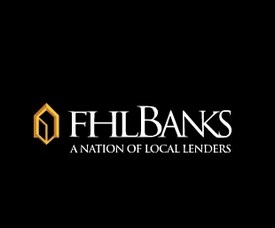
Source: Council of Federal Home Loan Banks
Federal Home Loan Banks' Profitability Means Safety and Soundness --- and Service to Local Lenders and U.S. Communities
WASHINGTON, April 30, 2014 (GLOBE NEWSWIRE) -- Continued profitability reported in today's preliminary unaudited first quarter 2014 combined operating highlights for the Federal Home Loan Banks (FHLBanks) indicates that the FHLBank model is working well for Americans served by local lenders of all sizes and many types everywhere in the country, according to John von Seggern, President and CEO of the Council of FHLBanks.
The 12 FHLBanks are regional wholesale banks cooperatively owned by commercial banks, thrifts, credit unions, and other financial institutions in every state and territory.
"Without the FHLBanks, it would be more difficult for financial institutions to make loans to families, farms, and businesses. Credit would be tighter and more expensive," von Seggern said. "And profitability means the FHLBanks are enhancing an already strong capital base to maintain safety and soundness in the nation's financial system," said von Seggern.
The FHLBanks raise money for their 7,500 member institutions to lend to consumers and businesses by selling bonds to institutional investors worldwide. They funnel those funds to their members in the form of secured loans which they call "advances." FHLBank members lend those funds in their communities to support housing, jobs, and economic growth.
The FHLBanks receive no congressional appropriations and took no government bailouts. In the early stages of the 2008 financial crisis, the Federal Home Loan Banks were a critical source of liquidity for the entire banking system.
"The FHLBanks serve to provide reliable funding and liquidity to all their members, especially smaller community institutions," said von Seggern. "They provide their members with fair and equal access to secondary mortgage markets." Their unique business model gives the FHLBanks the flexibility necessary to react to future changes in the mortgage market, he added.
"Importantly, the model provides the FHLBanks' ability to raise funds for their members at attractive rates on the global credit markets. The cooperative and regional structure allows the FHLBanks, working through their member institutions, to help keep credit flowing to all U.S. communities," von Seggern added.